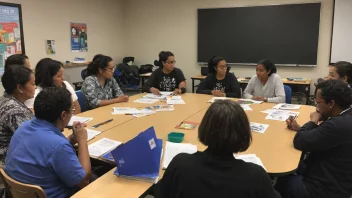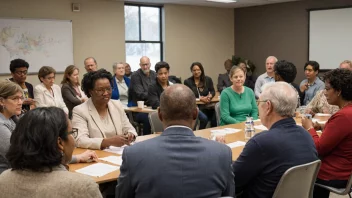The world we live in today is driven by knowledge, skills, and the ability to adapt to rapidly changing environments. Literacy, often perceived as the ability to read and write, encompasses much more than these basic skills; it is the foundation of effective communication, critical thinking, and lifelong learning. As societies evolve, the demand for a literate workforce becomes increasingly apparent, particularly in the context of economic development and social progress. This article delves into the intricate relationship between literacy and workforce development, exploring how improved literacy rates can enhance employability, boost economic growth, and contribute to a more equitable society.
The Importance of Literacy in the Workforce
Literacy plays a pivotal role in workforce development. Individuals with higher literacy levels are better equipped to understand job requirements, follow instructions, and engage in effective communication with colleagues and supervisors. In industries ranging from healthcare to technology, the ability to read complex texts, interpret data, and write reports is essential. Moreover, employers increasingly seek candidates who can demonstrate critical thinking and problem-solving skills, both of which are nurtured through literacy education.
Enhancing Employability
In an ever-competitive job market, literacy serves as a crucial determinant of employability. Job seekers with strong literacy skills are more likely to secure interviews and job offers, as they can present themselves effectively through resumes and cover letters. Furthermore, many employers conduct assessments that evaluate reading comprehension and written communication, making literacy a key barrier or gateway to employment opportunities.
Boosting Economic Growth
At a macroeconomic level, increased literacy rates correlate with higher productivity and economic growth. A literate workforce can adapt to new technologies and processes, leading to innovation and efficiency. Countries that prioritize literacy initiatives often experience a ripple effect, where improved education outcomes contribute to better health, reduced poverty, and enhanced social stability. For instance, studies have shown that for every additional year of schooling, a person's income can increase significantly, which in turn stimulates local economies.
Barriers to Literacy
Despite the clear benefits of literacy, many individuals face barriers that hinder their ability to acquire these essential skills. Socioeconomic factors, such as poverty and lack of access to quality education, significantly impact literacy rates. In low-income communities, resources for literacy programs may be scarce, and children may enter school without foundational skills. Additionally, adult learners, often juggling work and family responsibilities, may struggle to find time for literacy education. Addressing these barriers is crucial for fostering a literate workforce.
Community Initiatives Supporting Literacy
Various community initiatives have emerged to tackle literacy challenges and promote workforce development. Nonprofit organizations, local governments, and educational institutions are collaborating to create programs that deliver literacy training to underserved populations. These initiatives often include tutoring, mentorship, and access to resources such as libraries and online learning platforms. For example, programs aimed at adult literacy not only focus on reading and writing but also integrate job readiness training, equipping participants with the skills needed to succeed in the workforce.
The Role of Technology
In today’s digital age, technology plays a significant role in literacy education. Online courses, mobile applications, and interactive learning platforms provide flexible options for individuals seeking to improve their literacy skills. These tools can be particularly beneficial for adult learners who may have limited access to traditional educational settings. Furthermore, technology can facilitate remote learning opportunities, breaking down geographical barriers and making literacy education accessible to a broader audience.
Fostering a Culture of Lifelong Learning
Promoting literacy is not just about immediate job readiness; it also involves fostering a culture of lifelong learning. Employers benefit from investing in the continuous education of their workforce, as this leads to greater job satisfaction and retention rates. Organizations that encourage employees to pursue further education and develop their literacy skills create a more engaged and productive workforce. This culture of learning extends beyond the workplace, inspiring individuals to seek knowledge and skills throughout their lives.
How Individuals Can Get Involved
Individuals can play a vital role in promoting literacy and workforce development within their communities. Volunteering as a tutor or mentor for literacy programs can have a profound impact on learners of all ages. Additionally, advocating for policies that support education funding and access to resources can help create systemic change. Community members can also organize workshops or book drives to encourage reading and provide materials for those in need.
Conclusion
The relationship between literacy and workforce development is undeniable. As we strive to create a more equitable and prosperous society, prioritizing literacy initiatives is essential. By improving literacy rates, we empower individuals to enhance their employability, contribute to economic growth, and foster a culture of lifelong learning. It is imperative that we recognize the barriers many face in achieving literacy and work collaboratively to dismantle these obstacles. Together, we can build a future where everyone has the opportunity to thrive in the workforce and beyond.






